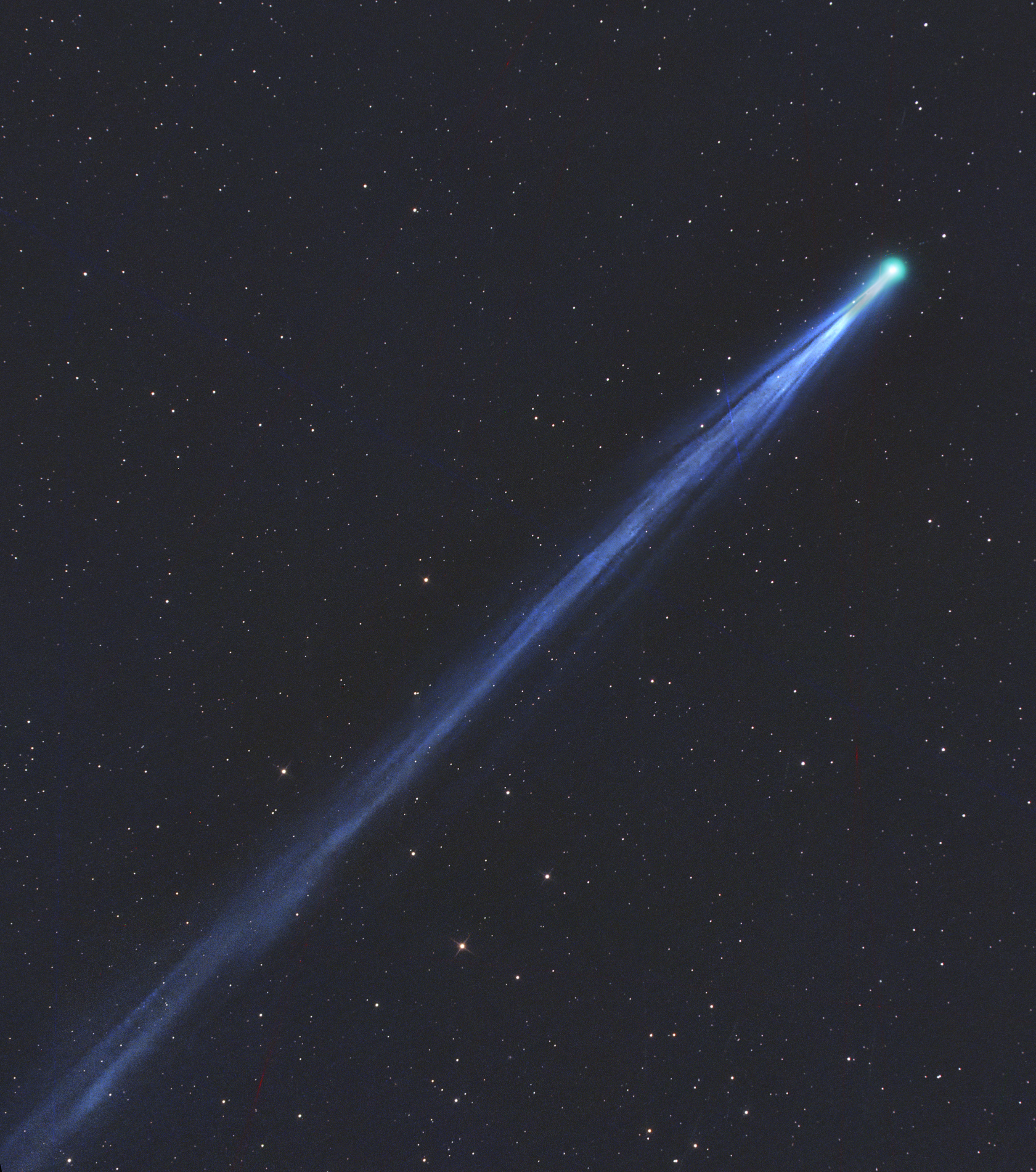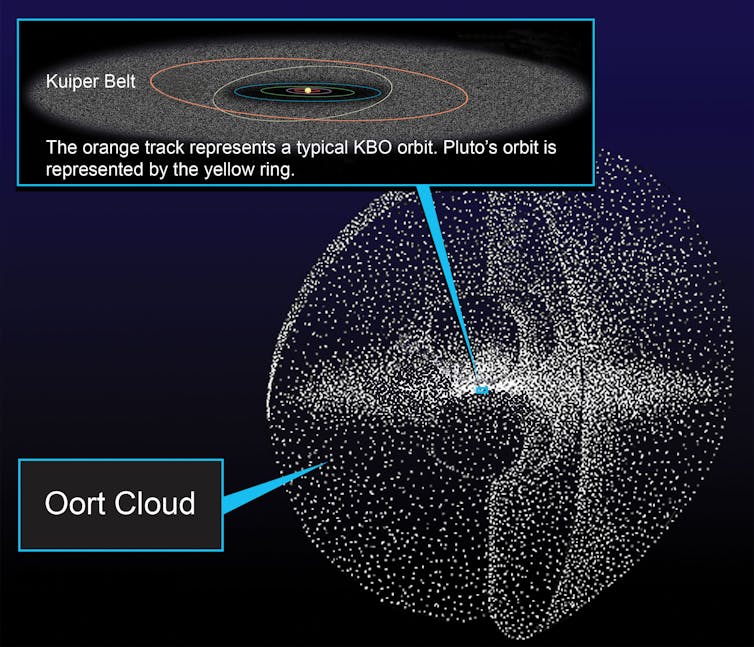
Key Takeaways:
(Editor’s note: This article was first published on The Conversation.)
When you hear the word comet, you might imagine a bright streak moving across the sky. You may have a family member who saw a comet before you were born, or you may have seen one yourself when comet Nishimura passed by Earth in September 2023. But what are these special celestial objects made of? Where do they come from, and why do they have such long tails?
As a planetarium director, I spend most of my time getting people excited about and interested in space. Nothing piques people’s interest in Earth’s place in the universe quite like comets. They’re unpredictable, and they often go undetected until they get close to the Sun. I still get excited when one comes into view.
What exactly is a comet?
Comets are leftover material from the formation of the solar system. As the solar system formed about 4.5 billion years ago, most gas, dust, rock and metal ended up in the Sun or the planets. What did not get captured was left over as comets and asteroids.
Because comets are clumps of rock, dust, ice and the frozen forms of various gases and molecules, they’re often called “dirty snowballs” or “icy dirtballs” by astronomers. Theses clumps of ice and dirt make up what’s called the comet nucleus.

Outside the nucleus is a porous, almost fluffy layer of ice, kind of like a snow cone. This layer is surrounded by a dense crystalline crust, which forms when the comet passes near the Sun and its outer layers heat up. With a crispy outside and a fluffy inside, astronomers have compared comets to deep-fried ice cream.
Most comets are a few miles wide, and the largest known is about 85 miles wide. Because they are relatively small and dark compared with other objects in the solar system, people can’t see them unless the comet gets close to the Sun.
Pin the tail on the comet
As a comet moves close to the Sun, it heats up. The various frozen gases and molecules making up the comet change directly from solid ice to gas in a process called sublimation. This sublimation process releases dust particles trapped under the comet’s surface.
The dust and released gas form a cloud around the comet called a coma. This gas and dust interact with the Sun to form two different tails.
The first tail, made up of gas, is called the ion tail. The Sun’s radiation strips electrons from the gases in the coma, leaving them with a positive charge. These charged gases are called ions. Wind from the Sun then pushes these charged gas particles directly away from the Sun, forming a tail that appears blue in color. The blue color comes from large numbers of carbon monoxide ions in the tail.
The dust tail forms from the dust particles released during sublimation. These are pushed away from the Sun by pressure caused by the Sun’s light. The tail reflects the sunlight and swoops behind the comet as it moves, giving the comet’s tail a curve.
The closer a comet gets to the Sun, the longer and brighter its tail will grow. The tail can grow significantly longer than the nucleus and clock in around half a million miles long.
Where do comets come from?
All comets have highly eccentric orbits. Their paths are elongated ovals with extreme trajectories that take them both very close to and very far from the Sun.
Comets’ orbits can be very long, meaning they may spend most of their time in far-off reaches of the solar system.
An object will orbit faster the closer it is to the Sun, as angular momentum is conserved. Think about how an ice skater spins faster when they bring their arms in closer to their body – similarly, comets speed up when they get close to the Sun. Otherwise, comets spend most of their time moving relatively slowly through the outer reaches of the solar system.
A lot of comets likely originate in a far-out region of our solar system called the Oort cloud.
The Oort cloud is predicted to be a round shell of small solar system bodies that surround the Earth’s solar system with an innermost boundary about 2,000 times farther from the Sun than Earth. For reference, Pluto is only about 40 times farther.

Comets from the Oort cloud take over 200 years to complete their orbits, a metric called the orbital period. Because of their long periods, they’re called long-period comets. Astronomers often don’t know much about these comets until they get close to the inner solar system.
Short-period comets, on the other hand, have orbital periods of less than 200 years. Halley’s comet is a famous comet that comes close to the Sun every 75 years.
While that’s a long time for a human, that’s a short period for a comet. Short-period comets generally come from the Kuiper Belt, an asteroid belt out beyond Neptune and, most famously, the home of Pluto.
There’s a subset of short-period comets that get only to about Jupiter’s orbit at their farthest point from the Sun. These have orbital periods of less than 20 years and are called Jupiter-family comets.
Comets’ time in the inner solar system is relatively short, generally on the order of weeks to months. As they approach the Sun, their tails grow and they brighten before fading on their way back to the outer solar system.
But even the short-period comets don’t come around often, and their porous interior means they can sometimes fall apart. All of this makes their behavior difficult to predict. Astronomers can track comets when they are coming toward the inner solar system and make predictions based on observations. But they never quite know if a comet will get bright enough to be seen with the naked eye as it passes Earth, or if it will fall apart and fizzle out as it enters the inner solar system.
Either way, comets will keep people looking up at the skies for years to come.
This article is republished from The Conversation under a Creative Commons license. Read the original article.









